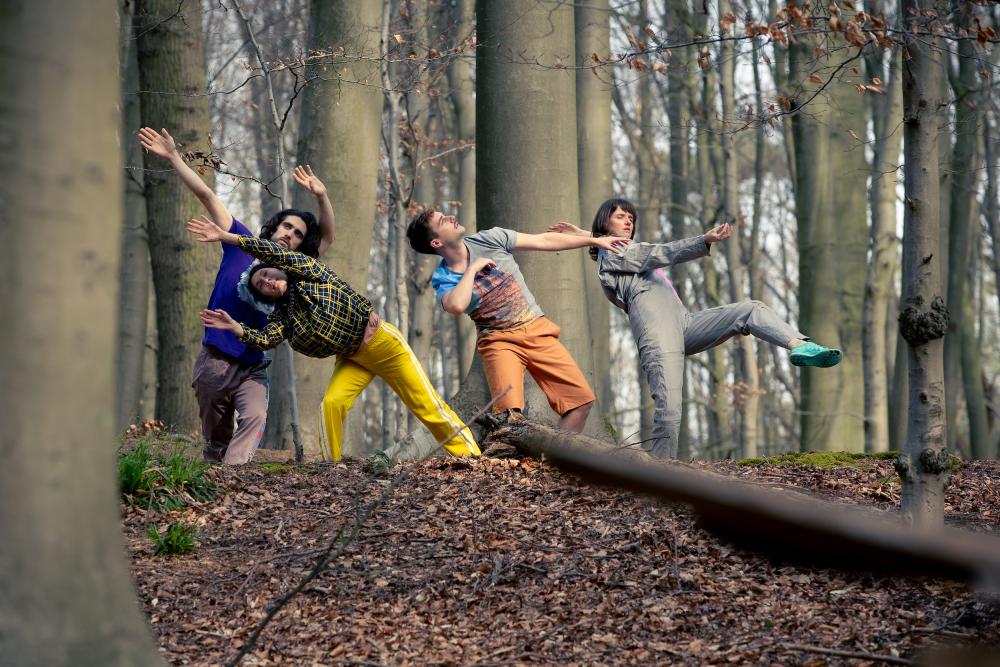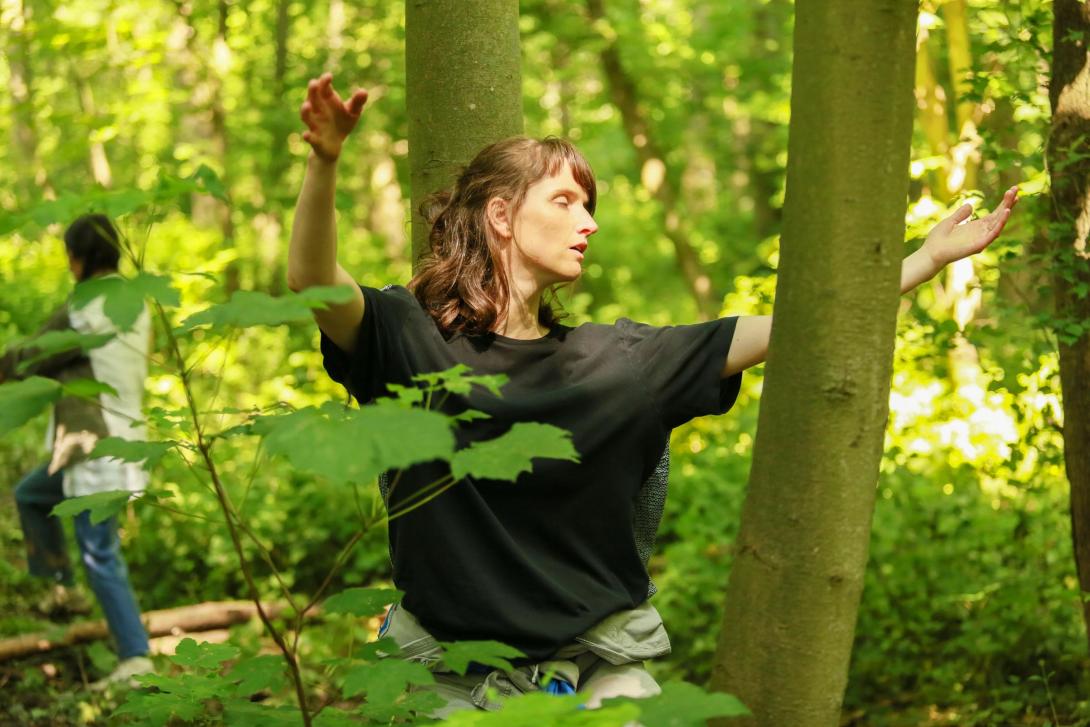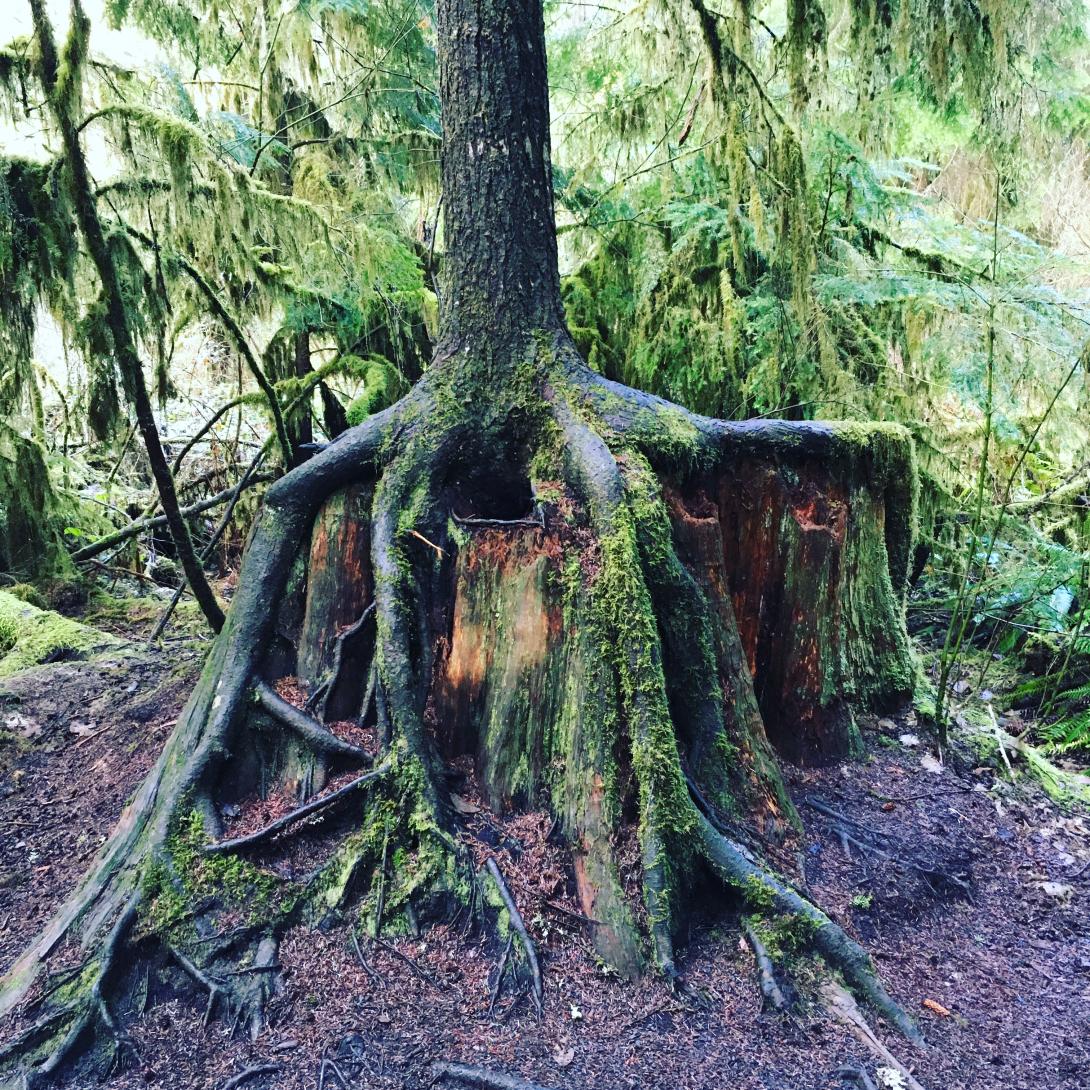Listen Here: These Woods
Lees meer over Listen Here : These Woods
‘We are moving in partnership with other beings’
interview with Daniel Linehan, by Michaël Bellon (BRUZZ, 25/08/2021)
Kaaitheater kicks off the new performing season with a weekend in the Sonian Forest. The Brussels-American choreographer Daniel Linehan invites the audience to a morning or afternoon performance of Listen Here: These Woods. For those who wish, there is also a guided walk through the woods or a workshop before or after the performance.
The Brussels-based choreographer Daniel Linehan had in fact already embarked on a career as a dancer in New York when, in 2008, encouraged by his colleagues Andros Zins-Browne and Eleanor Bauer, he came to Belgium to study at the dance academy P.A.R.T.S. During his studies, he quickly began working and building a network and eventually, he decided to remain in the dynamic international dance scene in Brussels and Europe, which he greatly enjoyed.
Kaaitheater describes him as a choreographer whose interest lies in the interaction between dance and non-dance. He has already made performances about sound poetry, new technologies, unemployment and karaoke. And now he is heading for the forest. This groundbreaking working method is already reflected in the name of his dance structure Hiatus. “I am always wondering what the hiatus or gap is between what I already know, and what I can still discover. Between the old formulas to make work, and new practises and experiments, like working outside the theatre.”
But a new project mostly has an identifiable origin or there was a seed. What was that for Listen Here: These Woods?
DANIEL LINEHAN: My last piece Sspeciess was still made in the traditional setting of a theatre. But as I was preparing, the dancers and I had been doing some research, reading books by Timothy Morton, a philosopher and ecotheorist, to such an extent that I became really interested in ecology, the way ecosystems work, how different species support each other, and how we as humans relate to our environment, to non-humans, materials and objects.
When we were rehearsing Sspeciess, we had already spent a day rehearsing in the woods: as a moment of inspiration, based on the reading we had been doing. That turned out to be a very important day to which we would refer a lot, because of all the different sensations we had had in the forest. It completely changed our agenda, because I realised very quickly we couldn’t just transplant what we did in the studio to this outside
environment between the trees and on an uneven ground. We first had to listen with our whole bodies to understand this new environment. It is that process that I wanted to extend. For Listen Here: These Woods
we spent several weeks in the woods. Sometimes even in the rain, because this year the weather was not always cooperative. (Laughs)
How transformative were those long periods in the woods for a dancer or for a human being?
LINEHAN: Our senses were always tuned to what we were hearing, feeling, smelling... When we are outdoors, our body is engaged in an entirely different way compared to the geometric architecture of a studio or a theatre. On a simple level it is the sound of the birds and the trees that affects you. When some days there was a lot of wind for instance, we let the movement of the trees be reflected in the movement of the bodies. The performance adapts to new situations and there is a great deal of response to what is happening in the moment. The piece has a beginning, a middle and an end, and different events that are quite determined. But in between these “landmarks” there is freedom to respond to the environment and the circumstances. One day there may be bugs flying around and we will follow the flight of the bugs with our hands, but the next day the bugs will not be there anymore.
Presumably, it is not easy to get the public into the same state of mind, awareness and openness at such short notice.
LINEHAN: During the first twenty-five minutes of the performance, we lead the audience on a walk through the forest, where the dancers at certain moments instruct the audience to notice what they hear and see. To
take a moment to pause, and tune into their own bodies, their senses and this environment which is not normally part of their daily lives. Just like we as dancers took our silent walks during the rehearsals every day to ritualise our entrance into this space that was not necessarily our space. To take the time to not just have this human habit of controlling and inserting ourselves, but to recognise the presence of other species, and almost “ask” if we could be invited.
Nature is sometimes described as indifferent or ruthless, and humans as destructive intruders. Would you go as far as to say we belong in “these woods”? Or that the trees become dancers in the piece?
LINEHAN: We have the sense that we can be welcomed. Although that doesn’t mean it is always going to be comfortable and we know that we are in a place where we can’t completely control everything. Being confronted with this inability to control is interesting, because I think much of the problem with the way humans have been relating to nature for decades and centuries now, lays in this effort to control.
We wanted to think more of it as a partnership. We are dancing in partnership with other beings. Do they become dancers or do we become trees? Probably not. We preserved a sense of difference, instead of merging ourselves and the surroundings into one abstract “being”. The trees can be trees, and we don’t have to pretend to be squirrels. (Laughs) It is not so much about mimicking. But there is a relationship, an exchange, a
common thing we share. If we are breathing, we know intellectually and scientifically that we are exchanging oxygen particles emitted from the trees and that we are giving them our dioxide. But can we also feel this connection and notice that we share living cells? That is where the title “Listen Here” comes in. Listening implies that there is something we wouldn’t notice, unless we take the time to silence our own agenda.
In the context of the renewed, more humble relationship with nature, recognising its rights and integrity.
LINEHAN: We want to remain humble in terms of what we can achieve in the larger cultural discourse about our relationship with nature. But of course, as performers we also feel the necessity to pause and tune in. There is a lot of work to be done on the level of politics and activism. In ecological thinking, scientific and statistical knowledge is important, but maybe not sufficient. It becomes evident from the moment that we are physically in contact with our environment that the idea of a strict divide between us and other species clearly is fiction.
During the rehearsal process for Listen Here: These Woods we also did a forest bathing – a practice that comes from Japan where a guide leads you through a forest and invites you to notice all the different shades of green or just to sit quietly and listen. Going through that whole process, I really felt that just by tuning my senses in to my surroundings, I started to care more. This embodied caring is also a necessary ingredient in the larger project of restoring a reciprocal relationship between humans and the rest of nature.



